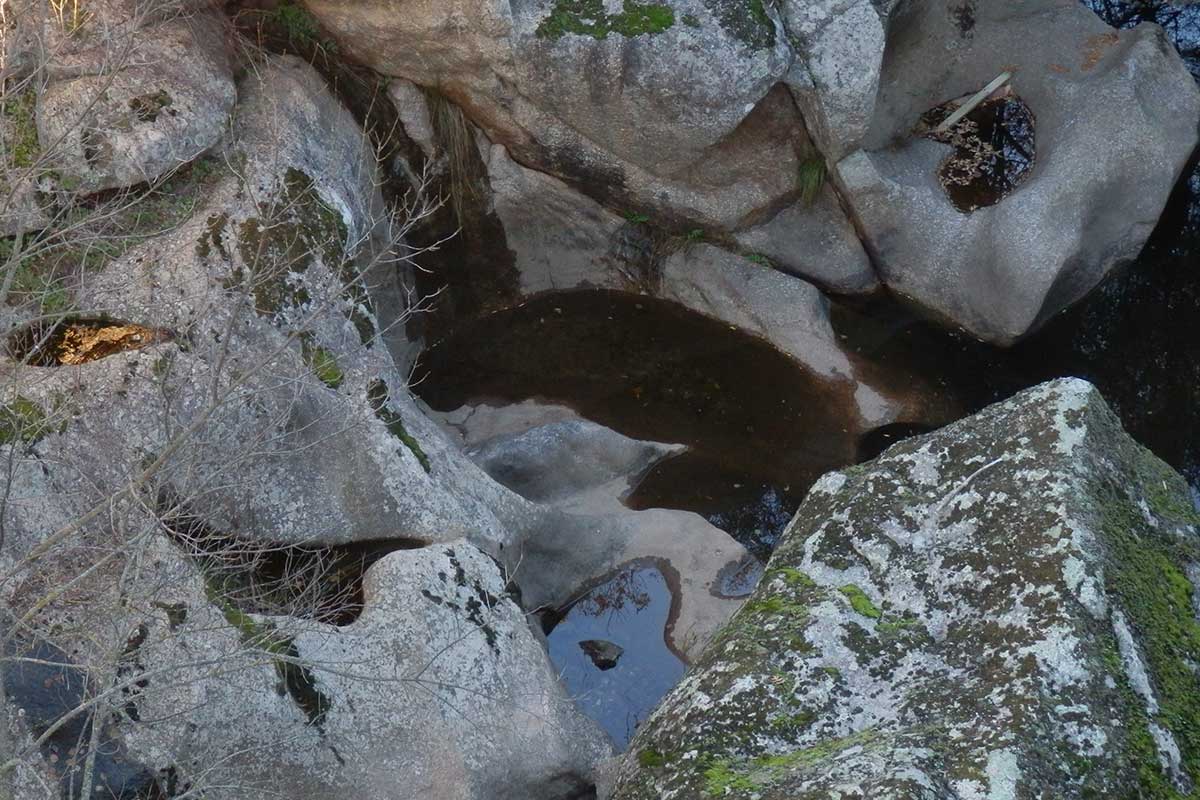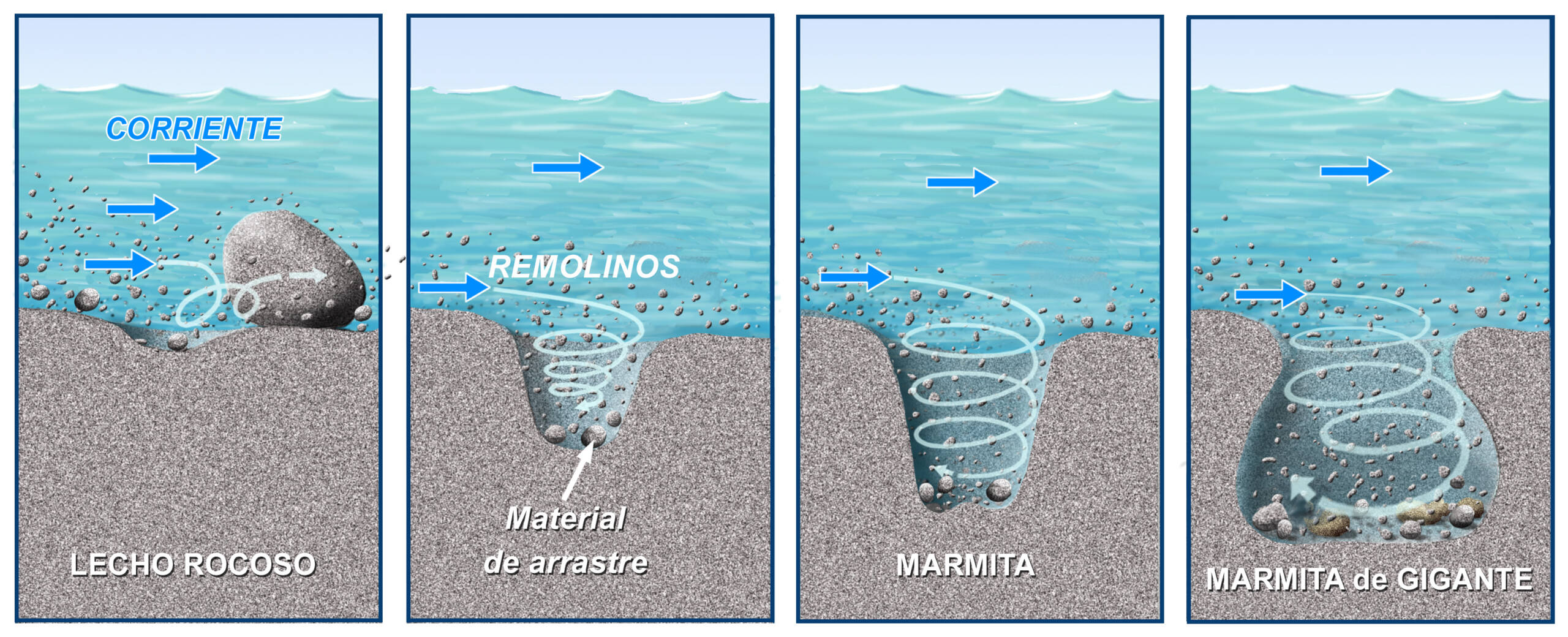LOCATION AND ACCESSIBILITY
This geosite is located on the northern border of the Geopark on the deep embedment of the River Ibor near where it flows into the River Tajo.
Access is easy on the CC-19 road which connects Bohonal de Ibor with Mesas de Ibor, just below the three bridges of Las Veredas built there at various historical periods to take advantage of the narrowness of the course some 3 km from Bohonal de Ibor.
ATTRACTIONS OF THE VISIT
We will observe one of the most spectacular spots of the River Ibor, a deep defile precisely on the section where the potholes which have been excavated directly in the granite rocks of the riverbed can be found.
The middle course of the River Ibor runs as far as the potholes before it becomes embedded to flow into the Tajo. Since ancient times use has been made of this watercourse to build several river mills, one of which can be found here; we can observe both its stonework and its engineering features, i.e. the waterwheel and channel used to divert the water to the millstone. As far as the landscape is concerned, the old bridge of La Mesta and the potholes, mill, water, and vegetation form a very pleasant aesthetic whole which can be visited particularly in the summer as a place of leisure and bathing.
The embedment of the river has protected the riverside woodland with both old and young examples of alders, black poplars, and willows, which are accompanied on the hillside by Montpellier maples and hackberries sharing the space with other shrubs such as dog rose, which equally seek the presence of cool humid soils.
GEOLOGICAL INTERPRETATION


